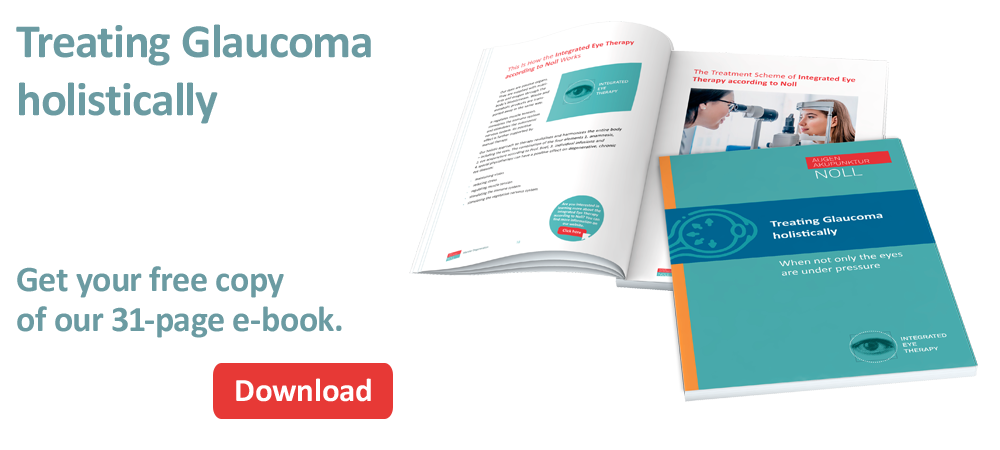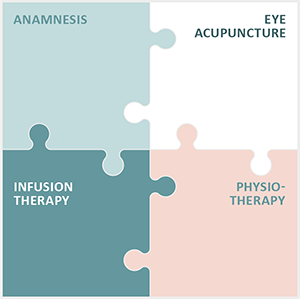Narrow-angle glaucoma treatment

Narrow-angle glaucoma treatment – we provide a complete overview of the various treatment methods for narrow-angle glaucoma
Narrow-angle glaucoma
Narrow-angle glaucoma is a rare form of glaucoma, also known as glaucoma, which is caused by an acute increase in intraocular pressure due to a blockage of the aqueous humour outflow in the eye. This condition, known as spontaneous glaucoma, requires immediate emergency medical treatment.
Causes of narrow-angle glaucoma
Narrow-angle glaucoma often occurs when the pupil dilates unexpectedly, either due to darkness or the use of pupil-dilating drugs. The dilation of the pupil causes the angle of the chamber in the eye to narrow.
Another risk factor is when the anterior chamber of the eye flattens or when proliferating tissue of the iris blocks the outflow of aqueous humour. In some cases, the iris can also obstruct the outflow of aqueous humour, which leads to an increase in intraocular pressure.
The acute increase in intraocular pressure can lead to a narrow-angle glaucoma attack.
Diagnosis of narrow-angle glaucoma
Characteristic signs of narrow-angle glaucoma are observed during an examination by an ophthalmologist. These include recognising a clouding of the cornea that impairs vision. These symptoms are accompanied by severe reddening of the eye and pronounced sensitivity on the part of the patient.
The use of a gonioscope makes it difficult to see the angle of the chamber and the pupil appears rigid, rounded and slightly dilated. In many cases, there is also a protrusion of the iris towards the cornea, known as “iris bombata”. In patients with repeated attacks of narrow-angle glaucoma, atrophy of the iris can often be recognised.
Symptoms of narrow-angle glaucoma
The symptoms of narrow-angle glaucoma are extremely distressing and require immediate treatment. The characteristic signs include severe headaches, accompanied by nausea and vomiting. The affected eye becomes very red and water retention in the cornea leads to oedema.
This is often accompanied by a considerable reduction in vision, accompanied by rainbow-like colours (halos). This condition is usually perceived as very dramatic – and rightly so.
Treatment options for narrow-angle glaucoma
The main aim of treating narrow-angle glaucoma is to open the blocked angle as quickly as possible. This often requires more than just the use of pupil-constricting eye drops, which are not sufficient in many cases.
The blockage of the chamber angle by the iris results from the pressure exerted on the iris by the fluid at the back of the eye. To release this blockage, an attempt is made to create a connection through the iris.
This can be achieved using procedures such as iridectomy or YAG laser iridotomy. These procedures allow a controlled exchange of fluid between the anterior and posterior segments of the eye, which leads to equalisation of the intraocular pressure and thus normalisation.
Prophylactic measures to minimise risk
Treatment of narrow-angle glaucoma can also be carried out preventively to minimise the risk of a glaucoma attack. As an alternative option, lens replacement can be considered.
This is particularly indicated if the body’s own lens shows age-related clouding in the form of a cataract. As the artificial lens to be implanted is around six times thinner than the natural lens, the lifelong risk of a glaucoma attack is significantly reduced.
Special case of intermittent angle-closure glaucoma
This is a temporary and less aggressive form of glaucoma.
Symptoms of intermittent angle-closure glaucoma
Intermittent angle-closure glaucoma is characterised by recurring symptoms that are similar to acute glaucoma attacks but are less pronounced in their intensity. These symptoms usually occur in situations in which the pupil dilates, such as at dusk. Patients often only notice them at such times.
However, it is important to take these symptoms seriously, as they can be harbingers of a glaucoma attack. The repeated increases in pressure can lead to irreparable damage to the optic nerve.
Diagnosis of intermittent angle-closure glaucoma
The patient’s medical history, combined with the challenging assessment of the chamber angle, is crucial for recognising intermittent angle-closure glaucoma. To confirm the diagnosis, a day and night pressure profile can be taken to objectively document the pressure increases.
Advanced treatment methods for narrow-angle glaucoma at Augenakupunktur Noll
Augenakupunktur Noll is dedicated to the treatment of chronic and degenerative eye diseases using the Integrated Eye Therapy according to Noll, which was developed and continuously improved by Michaela Noll. This therapy comprises four core components:
- A detailed medical history, which forms the basis for individualised treatment planning
- Eye acupuncture according to Prof. Boel, a specialised method for alleviating eye diseases
- Individual infusion therapies, tailored to the specific needs of the patient
- Customised physiotherapy that contributes to the overall treatment
Over the last 13 years, our practice has built up an international reputation, not least because of the positive feedback from our patients following treatment.
Narrow-angle glaucoma is a particular challenge in ophthalmology. It is characterised by a sudden increase in intraocular pressure caused by a narrowing of the chamber angle. This disease requires rapid medical action in order to prevent long-term damage.
With the Integrated Eye Therapy according to Noll, we focus on precise diagnosis and customised treatments tailored to the specific needs of our patients with narrow-angle glaucoma. Our approach also includes preventative measures to minimise the risk of further attacks.
Please note that results may vary from individual to individual and regular monitoring and adjustments are required to ensure the best treatment and results.


